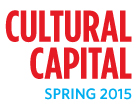| |||||||||
| |||||||||
Growing the Souls of Australian Cities
|
|||||||||
|
With a world-wide trend towards ‘mega-cities”, urban density continues to increase with growing demands on infrastructure, services and frameworks for social cohesion. The drivers and demands of economies are rapidly evolving. Cities, industrial in their genesis, now organize themselves around knowledge, experience, services, innovation and alternative economies. The international language of this “rebirth” has been informed by Richard Florida, Jan Gehl, Charles Landry and others. Urban environments and “creative” cities are being shaped by new questions: “Does it involve you? Make you want to participate? Does it help you be curious, imaginative, creative, innovative and inventive?” (Landry). These are broadly “cultural” aspirations. Challenges to achieve environmental sustainability have galvanised this work further. It seems that cities with increased building density, smaller living and working occupancy, services accessibility and good connectivity, can be sustainable. But to be livable, a city needs to realise people’s experience of well-being in the present and aspirations for the future. Cities in Australia are live to this challenge. Melbourne’s Federation Square has established a benchmark for community and cultural precincts. It has become Melbourne’s bridge from old city to new city. The mix of great design and public and private use managed in the context of an originating “Civic and Cultural Charter”, has created a contemporary and technically savvy meeting point for the city’s experience economy, social diversity, creative brand and energy and the power of public expression. The brief for the project conceived of Federation Square as a site for innovation, creative expression and community engagement: ‘a cultural focal point of the city,’ but when construction was completed in October 2002, the dramatic design by London’s lab architecture studio polarised opinion. The challenge at Federation Square in the early days was to pursue broad aims of engagement via place, community and cultural strategies, while “design” was the public and media focus. Success has been unequivocal with more than 100 million visits, more than 2000 public activities per year and Melbourne’s daily broadsheet newspaper declaring “…in just a few years Federation Square has assumed an important place in the physical and mental topography of the city and its people. It is a space filled with possibilities.’ Elsewhere Sydney’s major Barangaroo development is a $6 billion plus, 22ha precinct on the western foreshores of the Sydney CBD with more than 50% of the precinct being given over to public domain. When complete in 2021 it will create a new western face to the city including a six hectare harbour headland park, cultural spaces, continuous waterfront promenade, commercial office towers, residential apartment buildings, shops and an array of hospitality options including restaurants and a luxury hotel and resort. Aspirations for Barangaroo are however about more than its physical components and planning has recently commenced to ensure that it will be a place with a distinctive spirit contributing to the social and economic well-being of its community. Its role in contributing to growth, transformation and renewal of community and in demonstrating the best in urban life are supported by a place based approach and principles which embrace inclusiveness, sustainability, creativity and imagination, community engagement and connectivity. The notion of a city’s soul implies a character and depth. This ongoing essence is variously about history, culture, personality, interaction, style, intellect, kindness and appeal. It is also about the tensions, the “frisson” that exists in any great life. It is the reflection of the social energy within and between a people. As such a soul cannot be made or designed – it can only be given fertile ground and inspired to grow. Projects such as Fed Square and Barangaroo are that fertile soil.
Kate Brennan has an extensive background in business, urban spaces, community and cultural organisations. She is currently consulting on major urban projects in Australia. Previously she was CEO of Melbourne’s Federation Square and CEO of Adelaide’s major performing arts centre and precinct. She is involved in a wide range of Boards and committees seeking to advance various aspects of city and community development and has just retired as deputy chair of the independent Committee for Melbourne. | |||||||||
CURRENT ISSUE | PRINT ISSUE | ARCHIVE | CONTACT | SUBSCRIBE | |||||||||
Copyright © Lord Cultural Resources, www.lord.ca. All Rights Reserved. Lord Cultural Resources values your privacy and does not sell or trade email addresses. |



